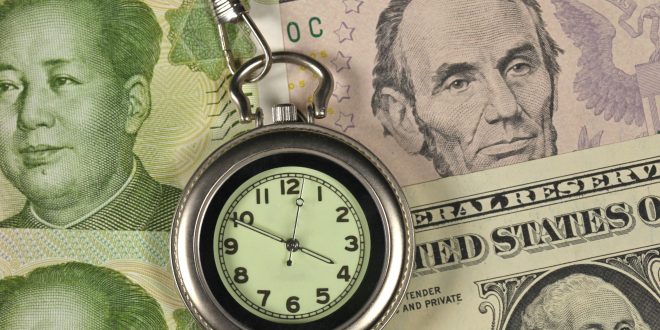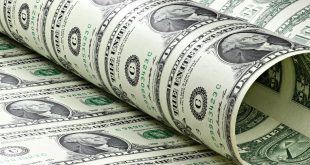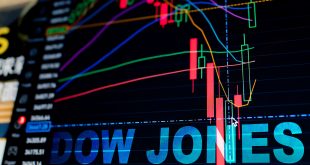Weekly Recap: 5 – 9 April
Last week was highlighted by the release of the last meeting minutes for the central banks in the United States and the Eurozone.
The March meeting, which saw the United States Federal Reserve deciding to maintain its monetary policy unchanged until the American economy recovers, witnessed concerns about the risks resulting from the pandemic.
Members of the Federal Open Market Committee (FOMC) agreed that the U.S. economy remained far from the Fed’s goals, with some expecting to raise interest rates sooner than previously expected, with some believing it should take place as early as next year, with an eye on the rise in Treasury bond yields
Across the Atlantic Ocean, the minutes of the European Central Bank’s (ECB) March meeting showed an openness to cutting bond purchases if market conditions allowed such a change in policy. In addition, the meeting saw a debate about a smaller increase in the bond buying activity.
Furthermore, ECB President Christine Lagarde expected fast economic recovery during the second half (H2) of 2021, but expecting the U.S. Fed will achieve its inflation target ahead of the ECB. Lagarde also said she thinks it is possible to raise the rate of vaccination from a current 14% in the EU to about 70% by next summer.
Meanwhile, concerns about the Coronavirus pandemic continued after a recent study showed that the Pfizer-BioNTech vaccine could be ineffective against the South African variant of the virus.
USD
The U.S. Dollar (USD) showed a mixed performance over the course of the week, before closing in losses.
The Dollar Index (DXY), which measures the greenback against a basket of six currencies, declined by about 0.83% as it finished the week at 92.16, recovering some its earlier losses.
Gold
Gold prices declined by the end of last week, as the U.S. Dollar (USD) rose across the board supported by rising Treasury bond yields on Friday, however, the yellow metal managed to achieve weekly gains
Gold futures for June delivery close the week at $1,744.80 per ounce.
For the week, gold’s most-active contracts increased by about 1%, supported by the decline of the U.S. Dollar (USD).
Oil
Oil prices registered its worst weekly performance in three weeks, due to rising concerns about a new wave of the Coronavirus pandemic and its negative impact on the recovery of the global demand for energy.
The U.S. West Texas Intermediate (WTI) futures lost 3.5% last week, making its highest weekly loss since mid-March.
Meanwhile, the global benchmark, Brent crude futures plunged by 2.9% on a weekly basis.
The Organization of Petroleum Exporting Countries (OPEC) and its OPEC+ allies will begin gradually raising production and easing output curbs next month.
European Stocks
European stocks managed to lock another weekly rise to score its longest streak of weekly gains since November 2019. Positive expectations regarding economic recovery in the Eurozone weighed off concerns about the slow rollout of coronavirus vaccines.
The pan-European STOXX 600 finished the week at a new a record high at 437.23 points, gaining 1.16% for the week.
Wall Street
The New York Stock Exchange (NYSE) recorded another weekly rise, with two of the main indices closing at a new record high, amid signs of economic recovery.
The Dow Jones Industrial Average gained 297.03 points, or 0.89%, to settle at 33,800.6 points.
The S&P 500 added 31.63 points, or 0.77%, and ended the week at a record 4,128.8 points.
Similarly, the Nasdaq Composite increased by 70.88 points, or 0.51%, to finish at 13,900.19 points.
The three main indices Wall Street recorded their third consecutive weekly gains, as S&P 500 rose by 2.7%, while the Dow leveled up by 2%, with both hitting new all-time closing highs, while the Nasdaq added 3.1% for the week.
US Dollar
The US dollar continued to rise since the beginning of last Friday’s morning trading, driven by the increase in US Treasury bonds yields over the last trading day of this week.
The rise came to push the US dollar index to higher levels at the end of the past week. The index, which measures the performance of the US dollar against a basket of major currencies, rose to 92.18 points compared to daily close of 92.06 points. The index fell to its lowest levels throughout the last day of trading this week at 92.03, compared to the highest levels at 92.41.
The US currency benefited from the decline of the euro after negative German data emerged, with the sterling falling due to concerns about the speed of the distribution of anti-corona virus vaccines after reports mentioned the possibility of a relationship between the AstraZeneca vaccine and blood clots that affected some cases that took this vaccine.
Euro
The euro fell at the end of Friday’s trading against the US dollar, affected by a decline in German data and the rise in the US currency, supported by a rise in US Treasury bond yields.
The EUR/USD fell to 1.1900 against the last daily close of 1.1914. The pair rose at the end of the trading day, Friday, at 1.1920, against the lowest level, which recorded 1.1867.
The German export index reading decreased by 0.9% in February, compared to the previous reading, which increased by 3.4%, which was lower than market expectations, which indicated a less sharp decline of 1.00%.
In February, the current account index in Germany, the largest economy of the euro area, increased to 18.8 billion euros, compared to the previous reading, which recorded 17.6 billion euros.
German industrial production also fell by -6.4% compared to the previous month at-4.00%.
Despite this daily decline in the European single currency on Friday, the euro was able to achieve weekly gains of 1.2%, recording a positive weekly closing at 1.1900, compared to the previous weekly close of 1.1761.
Pound
The pound ended Friday’s trading in a downward direction, affected by concerns about the speed of the distribution of vaccines in the United Kingdom and profit-taking operations against the British currency, taking advantage of the large gains it made in the first quarter of 2021.
GBP/USD fell to 1.3702 against the last daily close, which recorded 1.3732. The pair rose to the highest levels, which recorded 1.3750, against the lowest levels, which recorded 1.3669.
On a weekly basis, the pair suffered losses by 0.8% to 1.3702 against the previous weekly close of 1.3918, which indicates the lowest levels in a whole year.
Bitcoin
Bitcoin swung above $60,000 levels to approach record levels at the weekend, breaking a narrow range it was confined to for two weeks, supported by talk of a new contraction of supply in light of signs of wider use.
The largest and most famous cryptocurrency in the world recorded 61,222.22 dollars yesterday, Saturday, the highest level in about a month. And it decreased slightly to 59,907 dollars at 05:00 GMT today, Sunday.
Bitcoin is up 116% from its lowest level for the year of 27 thousand and 734 dollars recorded on the second of January. The currency crossed the 60,000 level for the first time on March 13, hitting a record $ 61,781.83 on the Bitstamp, immediately after US President Joe Biden signed the $ 1.9 trillion fiscal stimulus package.
Bitcoin’s big gains this year come amid wider acceptance of the digital currency as an investment and payment tool, in conjunction with an increasing demand by individual investors to inject liquidity into stocks, index funds and other high-risk assets.
 Noor Trends News, Technical Analysis, Educational Tools and Recommendations
Noor Trends News, Technical Analysis, Educational Tools and Recommendations





